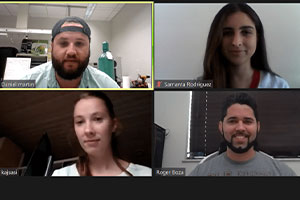
The U.S. has millions of gallons of hazardous radioactive waste buried beneath the surface at Department of Energy facilities around the country. The byproducts of World War II and a Cold War nuclear weapons race are laying there, contained in metal or concrete tanks the size of swimming pools, awaiting treatment and disposal.
It’s a discarding process that began in the 1940s and lasted throughout the Cold War. U.S. decision makers pumped radioactive waste into tanks stored underground. These containers, it turns out, corrode over time, posing an existential threat to the surrounding soil, groundwater and environment at large.
So how do you monitor radioactive tanks deep underground for cracks, breaks and other damage?
Read more at FIU News.
